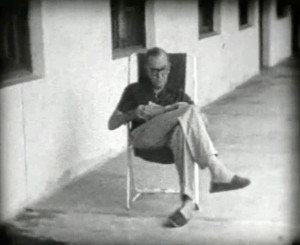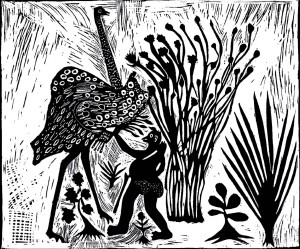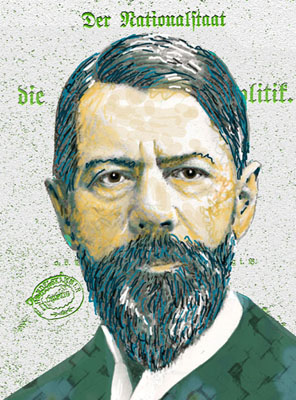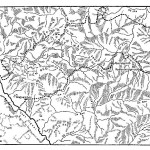Tiny Bouts Of Contentment. Rare Film Footage Of Graham Greene In The Belgian Congo, March 1959
My purpose in this contribution is to present and contextualize the only film footage ever recorded of the novelist Graham Greene (1904-1991) in the Belgian Congo in 1959. The footage was filmed with an 8mm camera, which did not record sound. It belongs to Mrs. Édith Lechat (née Dasnoy;1932-) and her husband, the leprosy specialist Doctor (later Professor) Michel Lechat (1927-2014).
From 1953 through 1960, Dr. Lechat was head of the leper hospital and colony of Iyonda, a village and mission station some 15 kms south of the city of Coquilhatville (now, Mbandaka) in central-western Congo. Greene stayed a number of weeks in Iyonda and other mission stations in the region in search of inspiration, a setting, and material for a new novel. The novel, A Burnt-Out Case, appeared in 1960, and was dedicated to Dr. Lechat. Greene occupied a room in the house of the missionary fathers in Iyonda, but spent long parts of his days with the doctor and his family. The film reached me through the hands of Édith Lechat, who had it transposed to a DVD-playable format, and via my friend Hendrik (a.k.a., “Henri” or “Rik”) Vanderslaghmolen (1921-), who was a missionary in the region at the time. As he was one of the only Belgian missionaries there with some knowledge of English, he often accompanied Graham Greene during his trips from one mission station to another. Rik Vanderslaghmolen and the Lechats are still close friends today.
Much of the information I offer below stems from conversations I had with both Rik Vanderslaghmolen and Édith Lechat in July and August 2013. Regrettably, Dr. Michel Lechat’s poor health condition did not allow me to probe his memory, but an interview he gave for the Brussels-based weekly The Bulletin on the occasion of Greene’s death in 1991 is available (Lechat 1991), as well as a closely similar talk he gave at the 2006 Graham Greene Festival in Berkhamsted, published in the London Review of Books in August 2007 (Lechat 2007). Édith Lechat has given me the kind permission to share the film with the readership of Rozenberg Quarterly and to add the necessary contextual information on both the historical situation and the contents of the film.
6 Comments
From The Web – Enduring Voices
Nearly 80 percent of the world’s population speaks only one percent of its languages. When the last speaker of a language dies, the world loses the knowledge that was contained in that language. The goal of the Enduring Voices Project is to document endangered languages and prevent language extinction by identifying the most crucial areas where languages are endangered and embarking on expeditions to:
Understand the geographic dimensions of language distribution
Determine how linguistic diversity is linked to biodiversity
Bring wide attention to the issue of language loss
When invited, the Enduring Voices Project assists indigenous communities in their efforts to revitalize and maintain their threatened languages.
The Language Hotspots model was conceived and developed by Greg Anderson and David Harrison at the Living Tongues Institute for Endangered Languages. It is a new way to view the distribution of global linguistic diversity, to assess the threat of language extinction, and to prioritize research. Hotspots are those regions of the world having the greatest linguistic diversity, the greatest language endangerment, and the least-studied languages.
Read more: http://travel.nationalgeographic.com/travel/enduring-voices/
Diversity Education: Lessons For A Just World
 Multicultural education, intercultural education, nonracial education, antiracist education, culturally responsive pedagogy, ethnic studies, peace studies, global education, social justice education, bilingual education, mother tongue education, integration – these and more are the terms used to describe different aspects of diversity education around the world. Although it may go by different names and speak to stunningly different conditions in a variety of sociopolitical contexts, diversity education attempts to address such issues as racial and social class segregation, the disproportionate achievement of students of various backgrounds, and the structural inequality in both schools and society. In this paper, I consider the state of diversity education, in broad strokes, in order to draw some lessons from its conception and implementation in various countries, including South Africa. To do so, I consider such issues as the role of asymmetrical power relations and the influence of neoliberal and neoconservative educational agendas, among others, on diversity education. I also suggest a number of lessons learned from our experiences in this field in order to think about how we might proceed in the future, and I conclude with observations on the role of teachers in the current socio-political context.
Multicultural education, intercultural education, nonracial education, antiracist education, culturally responsive pedagogy, ethnic studies, peace studies, global education, social justice education, bilingual education, mother tongue education, integration – these and more are the terms used to describe different aspects of diversity education around the world. Although it may go by different names and speak to stunningly different conditions in a variety of sociopolitical contexts, diversity education attempts to address such issues as racial and social class segregation, the disproportionate achievement of students of various backgrounds, and the structural inequality in both schools and society. In this paper, I consider the state of diversity education, in broad strokes, in order to draw some lessons from its conception and implementation in various countries, including South Africa. To do so, I consider such issues as the role of asymmetrical power relations and the influence of neoliberal and neoconservative educational agendas, among others, on diversity education. I also suggest a number of lessons learned from our experiences in this field in order to think about how we might proceed in the future, and I conclude with observations on the role of teachers in the current socio-political context.
Read more
De geschiedenis van de San
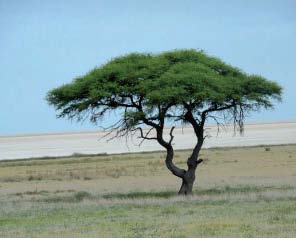 Destijds, lang, lang geleden was er een vrouw die =Um-=um-Borose heeft geheten. Zij was onze moeder en zij is van de zon af gekomen.
Destijds, lang, lang geleden was er een vrouw die =Um-=um-Borose heeft geheten. Zij was onze moeder en zij is van de zon af gekomen.
Umum Borose baart, na haar dood, kinderen van de zon, de San volken.
De San van nu zijn nakomelingen van de oudste mensen op aarde. Hun tradities, levensbeschouwing en geschiedenis zijn verschillend van de hen omringende Bantoe volkeren.
De San leefden in groepen, ieder met een eigen taal en naam, verspreid over heel Zuidelijk Afrika. Meestal werden ze verjaagd van de grote gebieden waar ze leefden. Pas recent zijn ze zichzelf als een volk gaan zien. Als volk werden ze o.a. Bosjesmannen, Bushmen of San genoemd en in Botswana bij voorbeeld ook Basarwa. We zullen hen, afhankelijk van de context, San, Boesmans, Basarwa of Bushmen noemen en soms hun eigen groepsnamen gebruiken, die velen van hen verkiezen.
Het oudste volk ter wereld
In Afrika ontstond zo’n 200.000 jaar geleden de huidige mensensoort, de Homo Sapiens. Recente genetische onderzoekingen wijzen erop dat de genen van de San en van sommige Pygmeeennstammen teruggaan tot het oudste genetische menselijk materiaal ter wereld. De San kwamen waarschijnlijk zo’n 20.000 jaar geleden uit het Noorden naar de zuidelijke delen van Afrika. Dat was lang voordat de Bantoevolken uit Centraal Afrika er arriveerden.
De San leefden in en rond de Kalahari, het enorme savannegebied in het zuiden van Afrika. Hun leefgebied strekte zich uit van de Atlantische tot de Indische oceaan en van de Zambezi tot Kaap de Goede Hoop waar zij heel lang de enige bewoners waren, zoals blijkt uit rotstekeningen en archeologische vondsten die dateren tot 20.000 jaar geleden. Read more
Waarom legt een struisvogel een ei?
Om kinderen te krijgen natuurlijk.
Struisvogels leggen veel eieren, soms wel 15, en hebben daarom ook veel kuikens.
De bosjesmensen gebruiken de eieren ook om er hun water in te bewaren. Ze maken er een gat in, laten het ei leeglopen en maken een dopje van gras waarmee ze het gat kunnen dichten. En dan doen ze er het kostbare en schaarse water in dat ze vinden in de woestijn, zodat het een veldfles wordt, en die nemen ze dan mee op hun tochten.
Ooit was de wereld leeg, zonder bewoners. Er waren nog geen mensen, nog geen huizen, nog geen dieren of planten. Toen kwam Mantis, de god van de bosjesmensen, hij zette alle dieren op de aarde en schiep ook de bosjesmensen. Mantis had een probleem, hij had het vuur hoog in de lucht en die wilde hij naar de aarde brengen. Want het vuur is belangrijk voor de mensen: je kunt je eraan warmen, je kunt erop koken en je kunt er gevaarlijke dieren mee op afstand houden.
Maar vuur zelf is ook gevaarlijk.
Dus Mantis dacht: “Aan wie kan ik nou het vuur geven om het veilig te bewaren?”
Hij keek naar alle dieren, naar de giraf maar die heeft geen plek voor vuur, naar het nijlpaard maar die leeft in het water, dus dat is ook niet handig. Toen viel zijn oog op de struisvogel, want die heeft grote dikke vleugels en daar kan zo’n mandje met vuur wel achter verstopt worden.
De struisvogel voelde zich toen heel belangrijk. Hij deed zijn vleugel open, Mantis zette het vuur erachter en de struisvogel deed zijn vleugel weer dicht.
De bosjesman had gezien dat hij het vuur kreeg. En die dacht: “Ik wil dat vuur hebben, want dan kan ik warm worden, koken en de leeuwen weghouden”.
Maar hoe moest hij dat vuur nu te pakken krijgen?
De bosjesman ging naar de struisvogel en hij zei tegen de struisvogel: “Wat ben jij een mooie vogel! En je bent ook heel sterk en je kunt heel hard lopen.”
De struisvogel was zeer gevleid en hij luisterde aandachtig toen de bosjesman vervolgde: “Maar je kunt nog niet vliegen”.
Daar was de struisvogel inderdaad erg bedroefd over, dus hij luisterde nog meer aandachtig toen de bosjesman zei dat hij dat misschien wel kon leren. “Als je nou
morgenochtend naar de heuvel loopt en je steekt je kop in de wind en je doet je vleugels omhoog terwijl je van de heuvel springt, dan ga je vanzelf vliegen.”
De struisvogel kon er niet van slapen, zo spannend vond hij het vooruitzicht om te leren vliegen. Dus bij het krieken van de dag, toen de zon opkwam, liep hij naar de heuvel, ging erop staan, deed zijn kop in de wind en zijn vleugels omhoog en liet de wind erdoorheen spelen.
En toen viel het mandje vuur naar beneden en de bosjesman, die achter de heuvel verstopt zat, holde ernaartoe om het weg te halen. Hij rende ermee weg en de struisvogel had het nakijken.
Wat was de struisvogel boos op zichzelf. Wat was hij een domoor. Hoe kon hij nou denken dat hij kon vliegen? De bosjesman had hem in de maling genomen. Hoe kon hij nou vergeten dat hij het vuur moest bewaken?
Sindsdien legt de struisvogel altijd een ei buiten zijn nest, zodat hij niet vergeet dat hij aan het broeden is. En dat ene ei komt niet uit zodat dat ei door de bosjesman gebruikt kan worden als veldfles om er water in mee te nemen.
Uit: Fabels uit de Kalahari – Kalahari Support Group. ISBN 978 90 361 0356 5
Voor meer informatie: www.ksg-san.nl
On The Limits Of Single-Issue Social Science
The state of the art of the social sciences at the end of the sixties of the past century was characterized by a strong mood of optimism.
The rediscovery of the critical roots of social sciences as exemplified by the work of Marx and Weber contributed to the idea that one of the main tasks of social science should be to unravel the dynamics of social inequalities and to demystify ideological legitimatizations of those inequalities. Besides, the development of analytical tools and the recognition of the fast growing capabilities of computer software that could process huge amounts of data offered new opportunities to study the complexities and dynamics of modern societies. The combination of theoretical ambitions and research-technical possibilities seemed to promise new ways for social research inspired by ‘sociological imagination’ (C. Wright Mills, 1967).
A well-known example is the ambitious project of The Club of Rome: a group of interdisciplinary researchers who aspired to develop a model encompassing a variety of social, economical, cultural and environmental factors to study the development and possible futures of the living conditions of societies, social groups within these societies, and mankind in general (Meadows, 1972). The explicit ambition of Dennis Meadows and his colleagues was to combine a holistic approach with a well-founded research strategy using new analytical tools. However, the validity of their research results was rather limited due to the fact that the theoretical focus of their research was biased by a neo-Malthusian political agenda.
Read more
Comments Off on On The Limits Of Single-Issue Social Science
